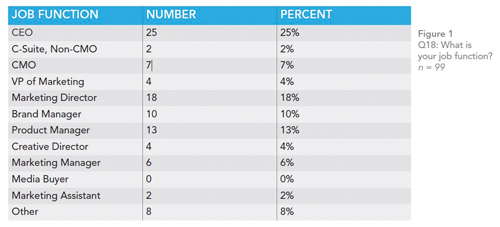 By Jay Rockliffe
By Jay Rockliffe
Digital transformation has taken industries across the globe by storm. While we tend to focus on the technology that is being introduced into society, we would be remiss to ignore that data is the driving force behind all of this progress.
Success in the digital economy, and digital transformation, revolves around data. The ability to harness and effectively manage vast quantities of data, with artificial intelligence (AI) and machine learning, allows us to make better decisions at a previously unimagined scale and reach.
A marketer’s ability to capture data, leverage it and refine it will deliver actionable and impactful insights. Modern marketing uses data to segment and target customers, thereby predicting unique consumer likes, dislikes and future behaviours.
Enter UX design
The emergence of highly personalized content is set to disrupt the marketing industry and create a reinvigorated notion of user experience design (UX design). UX design is where data meets technology meets the external users (customers) meets the internal users (data analysts, Marketing, Advertising, management).
The concept of UX design is not new. Consumers have grown to not only enjoy intuitive, user-friendly digital experiences, but to expect it. Coupled with the shift in customer demand, digital transformation has expanded across all industries, encouraging increasingly nimble, data-driven campaigns.
What IS new is the infusion of advanced technologies with cutting-edge methods. To capture and utilize them, Adastra, a global data company with shared Canadian and European headquarters, acquired Prague, Czech Republic-based Proboston in 2018 to tap into its work in aesthetic, UX design capabilities. It then launched Proboston North America to help Canadian marketers and brands unlock and drive insights from data.
UX design is the technique of creating web sites, apps or products that provide intuitive and meaningful experiences to users. UX is often conflated with UI (user interface) design, but is much broader than just the interface and involves characteristics not just of design and brand, but of usability and purpose.
UX design creates an experience for the end user that works at the primal levels of emotions and attitudes. At its core, good UX design requires an understanding of human behaviour, values and cognitive biases, as well as the goals of consumers and employees using the applications.
Why it is needed
An underlying reality of many data driven marketing projects is that they do not always reach their full potential. Project success is not solely about delivering the right data at the right moment. In fact, a common reason they fall short is from lack of adoption and stickiness. Despite a project’s sophistication, if both internal and external end users are not fully committed and in agreement with the project’s overall mandate, it is almost guaranteed to fail.
Studies have shown that a good UX increases adoption by users, whether they are customers, employees, managers or executives. What is often missing is not functionality, but something that is tied to the sensory and reward experiences of the end user.
If the end user of any system is not fully engaged in terms of usability, the project is unlikely to survive past its initial stages. Companies that succeed embrace this concept of UX design and are constantly honing and improving the experience based on user feedback and insights, creating a profound and positive employee and customer experience.
Nevertheless, user experience is no longer a competitive advantage. Rather, it is a baseline for success.
With emerging technologies being adopted as part of organizations’ digital transformation journeys, new types and larger quantities of data are providing in-depth insights into customer behaviour and satisfaction. This allows organizations to adapt and improve their marketing strategies, enabling them to create hyper-segmented and personalized experiences for customers.
These custom experiences can include varying content, such as products or services. Or they can dictate which marketing channels are used to execute campaigns.
The arrival of targeted video ads
Science fiction has been teasing the idea of personalized video ads and content for decades. Perhaps, most famously in the Steven Spielberg classic, Minority Report, Tom Cruise’s character is followed along by a series of personally targeted ads as he walks (John Anderton! You could use a Guinness right about now).
Fast forward nearly two decades and personalized marketing is becoming the new reality. Data drives omnichannel marketing, allowing for custom experiences based on user habits and preferences. The use of customer relationship management (CRM) data and AI help elevate personalized video, enabling it to learn and hone its results over time to become more powerful.
For example, T-Mobile improved the effectiveness of its email communication to its customers using a personalized video platform called AmetIO. The platform realizes the power of AI and the cloud to personalize content at scale and tell a visual story to engage consumers at an individual level. The use of personalized videos resulted in the fourfold increase in customer acquisitions.
When AI meets Marketing a truly watershed moment transpires. The combination of visual, aesthetically pleasing and UX design combined with an AI and data-driven approach are set to explode across the landscape of brands and savvy consumers.
Jay Rockliffe is vice president of Marketing and Growth at Adastra Corporation.


